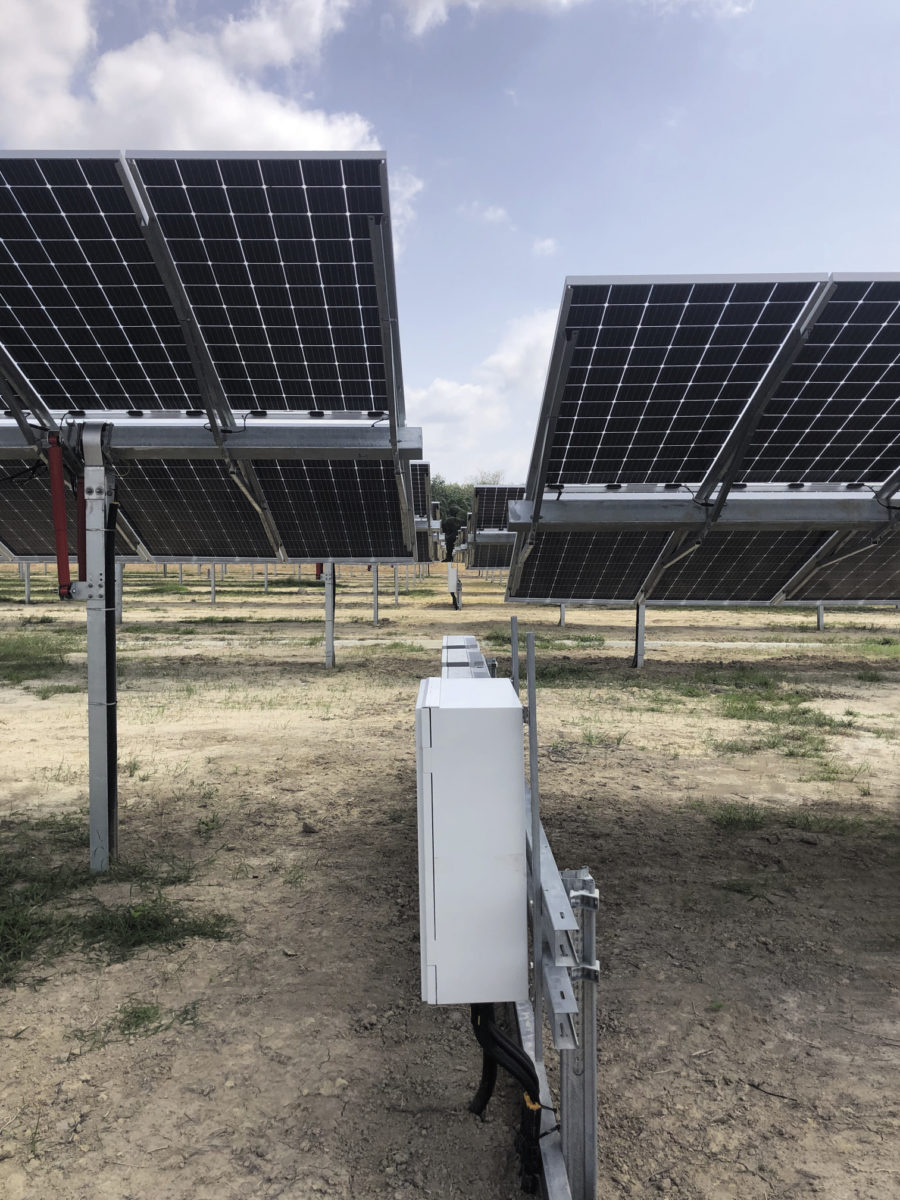Building solar plants has become a game of marginal gains, and IB Vogt’s procurement director, Patrick Zenker, knows a thing or two about this subject. He recently met with pv magazine to explain that in the end, solar plants are financial products, and that the right balance between componentry, costs and engineering must be found. “The financial model and the right system balance is what matters,” says Zenker.
In the past, EPC service providers such as IB Vogt were proficient at optimizing solar PV plants by ensuring that the balance-of-system costs were just right and by making the best possible use of land. Now, Zenker says, trackers are technically so mature that they can be used at scale in various parts of the world, and when combined with bifacial modules, they can boost a plant’s production even further. While this sounds great at first, he does caution that there is still a learning curve that EPCs will have to go through.
Adapting to market advancements in pairing the two technologies, IB Vogt has finished a bifacial and tracking system in Krabi, Thailand. Featuring Arctech’s SkySmart tracking system, the new project has 5 MW of capacity. “In Thailand, everything came together for us. The investor, the land, the supply chain – everything looked right to do our first bifacial tracking system,” Zenker enthuses. “It was the right time for us to make a move into this new technology.”
Finding that right balance when examining land characteristics is fundamental to any project that incorporates bifacial modules. This includes determining whether the ground is flat enough for trackers, as well as a site’s potential albedo. But land prices are also a critical consideration. Rows for a tracker system are set further apart than with fixed-tilt installations, and with bifacial trackers, they are typically even further apart. “This means you have a lower ground cover ratio, but on the other hand, gains from the rear-side,” he explains.
The height of the installation will influence how much gain there will be from the backside of the modules. “It’s quite obvious that when the modules are higher, more light can get under the system to be reflected off the ground,” Zenker explains. But a higher elevated tracker means wind loads have a stronger impact on the system design, so the profile thickness of the post needs to be increased – and that comes at a price.
In Thailand, the company has not fully delved into this level of optimization. Instead, IB Vogt is trying to collect data before bifacial and tracking technology goes even larger. Suppliers such as Arctech Solar are delivering a blueprint solution with significant R&D investment, but EPCs routinely develop further off this to find their sweet spot. Height, ground cover ratio and increased capex are factored against higher yields, LCOE and power purchase agreements, so finding a balance almost becomes a dance with the numbers for EPCs. Zenker says that tracking with bifacial tech is a calculation that works and makes sense. He explains that projects utilizing the combined technologies will likely achieve gains of 10-20%.
IB Vogt is currently installing two additional bifacial projects with Arctech’s SkySmart tracking system in Southeast Asia. Both are scheduled to be commissioned this year. However, the developer says that it still installs 80% of its projects with fixed-tilt racking. With the potential for increased yields, why don’t all installations feature trackers with bifacial modules? Zenker swiftly answers that trackers require considerably more effort during the development and construction phase. Experienced construction personnel need to be on site, and a foreman crew needs to travel to the supplier and begin building test tables. And in the field, packaging needs to be spot on to avoid the intrusion of dust into delicate parts.
“We will see where it goes in the future,” says Zenker. “It is not easy to set up; it requires some O&M effort. But if it works, from a financial perspective – there is nothing better.”
This content is protected by copyright and may not be reused. If you want to cooperate with us and would like to reuse some of our content, please contact: editors@pv-magazine.com.

